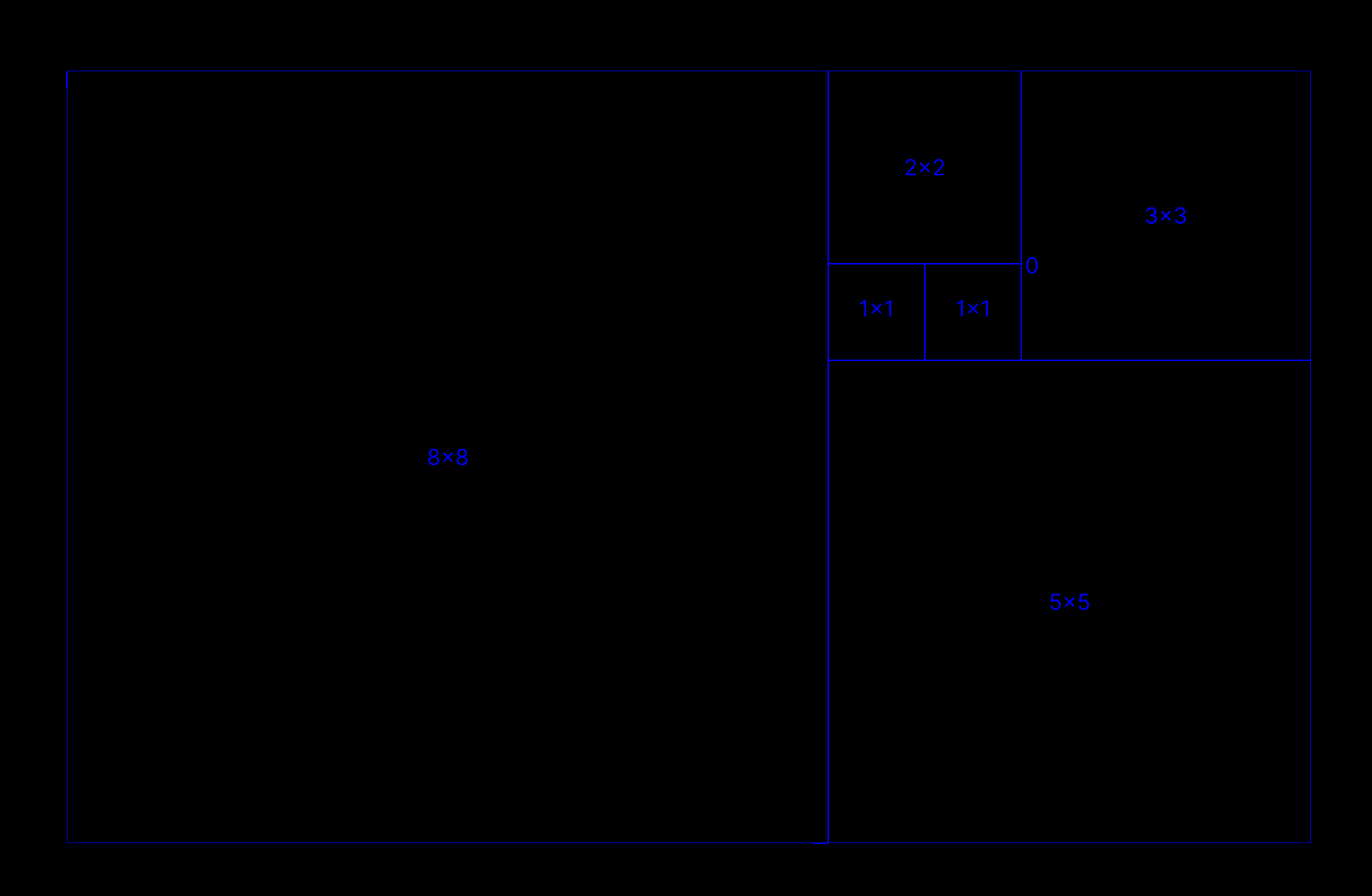Quintessence: On The Relationship Between Venus, Phi and Five
Already a member? Read the full article here.
Quintessence
Quint-essence, literally means fifth essence or fifth element. The word quintessence is also related to the word quintessential of similar origin which is defined as representing the most perfect or typical example of something.
The five (5) is the number of the macrocosm of human experience. As we will uncover more deeply, it is also related to various sacred geometric proportions. One of them is the infamous golden ratio, or Phi (Φ), whose proportion is based on the square root of 5. The golden spiral, as seen below, has a growth factor of Φ. The relationship of the number Φ and growth is also visually apparent when we look at many plants, flowers and animals, and as such the 5 in the context of the golden spiral is the number of solar growth. Outside of the golden ratio, the 5 plays a role in our physical and spiritual bodies: our material bodies are made up of 5 appendages (the head, the two arms and two legs), we have 5 fingers on each hand and 5 toes on each foot, and we experience the world primarily through the 5 senses of touch, hearing, sight, smell, and taste.
The ‘5’ is the number of experience, as the fifth element adds the layer of essence to the material world. The etymology of the word essence is from Latin essentia meaning "being". Originally, the essence character of something was mainly used in the context of perfumes; it was the “ingredient which gives something its particular character". The 5 is the essential character of a being. The 5 makes the world worth experiencing, through the emotional realm of touching, the harmonies of hearing, the deliciousnous of smells and tastes, and the colours and proportions of seeing. The 5 rules how the microcosm relates to the upward macrocosm.
As we are the ‘medium’ scale of consciousness between the above and the below, so too does the 5 represent this. The 5 is literally the middle of the number field any way you look at it. The 5 is the middle between 1-9.
1 2 3 4 5 6 7 8 9
If you look at a base 10 number system where there is no exact middle, the middle would technically be 5.5. You can also of course get the resultant 10 through the addition of two 5s.
The glyph for the number 5 incorporates the more feminine circle with the masculine angle, somewhat signifying a balance between the two.
5
The ‘5’ is Hebrew is ה (he), which could also be interpreted as a kind of doorway or threshold, which could also be interpreted as a symbol of the middle.
ה
How the 5 is represented determines the main structure through which we experience the world. There are two ways of obtaining the number 5 through addition:
2 + 3 = 5 = 4 + 1
The Pythagoreans were fascinated with the creation of 5 through the union of the 2 and the 3: the 2 was the first even, feminine number and the 3 the first odd, masculine number. This fascination and admiration for the 5 led to further study with regard to the 5-pointed star (pentagram) and the Golden Ratio.
Pentagram and the Golden Ratio
The word Pentagram comes from the Greek, “pente” meaning “five” and “gramma” meaning, “that which is written, that which is drawn, picture. letter.”
The Golden Ratio and the pentagram are connected geometrically. Φ is typically represented by the equations below. The equations in themselves reveal the Golden Ratio's properties of self-similarity and proportion. The addition of 1 in the below equation represents the integration of the whole to its parts in the ratio, and the division by 2 scales the value to maintain the unique property that the ratio of the whole to the larger part is the same as the ratio of the larger part to the smaller.
The below equation of Phi expresses the harmonic properties of the Golden Ratio, which is that the small is to the large as the large is to the whole:
The pentagram is a visual example of these proportions, wherein:
Φ = a/b
Φ = b/c
Φ = c/d
As the pentagram can nest within itself infinitely upwards or downwards, the Phi ratio within the form itself continues to scale infinitely.
The concepts that the Φ embodies are embedded naturally within the pentagon and pentagram themselves. When we consider the relationship the number 5 has to the rest of the number scale, we can clearly find a correspondence with another archetype who embodies these qualities: The Hierophant.
The Hierophant
The Hierophant, or The Magus of the Eternal, is the 5th major arcana card in the Tarot. The Hierophant corresponds to Taurus—fixed earth—ruled by Venus. The Hierophant’s Hebrew letter is ו (vav) means “to bind”, and this is fitting given the Hierophant is naturally a bridge between the above and the below. The nail and the Hierophant’s purpose aligns in that they both connect—they hold things together. As we discussed in On Libra Beauty and Justice, Venus too is a bridge between the above and the below as described in her creation myth.
This bridge, or union between the below and the above—material and divine—are obliquely pointing to other symbols within the card related to Venus such as the keys, the 2 and the 3, the masculine and feminine. These symbols are all pointing to the union of opposites, suggesting that the Hierophant is the being between these two worlds, holding them together like a nail.
This is interesting considering Venus is sometimes depicted as a “hermaphrodite”, as mentioned in the book titled Numbers: Their Occult Power and Mystic Virtues:
This text immediately conjures up an image of Baphomet. Below is a modern illustration drawn in 1856 by the French occultist Eliphas Levi, in his book Transcendental Magic: Its Doctrine and Ritual.
In this illustration, the pentagram is visible on the forehead of Baphomet. Famously, the pentagram when associated with “darker” energy is shown with the pentagram reversed, where the centre upward triangle—the fifth element—is facing downward, symbolizing a orientation of the microcosm toward earth or the material.
As the 5 is inextricably linked to the human microcosm and the human experience, it is no wonder that symbols related to the 5 have become dual in nature. As the star has a bi-fold symmetry along its vertical axis, but not along its horizontal axis, it naturally has either a upwards or downwards orientation. This orientation of the way we see the 5 playing out in our reality mirrors what is happening on the internal: when upward, the pentagram is observed to depict a kind of spiritual aspiration but when pointing downwards, it is seen as a witchcraft and black magic symbol. The imagery of the ascension or de-cension, with the head or crown orienting upwards or downwards, is representative of the duality that all humans experience within our 3D construct.
It’s interesting to consider that Venus also has dual symbolism when looked at under certain lens. Within different stories Venus shows this duality with respect to her personality and symbology: she can be a Goddess of pure love and beauty or she is a symbol of lust—even seen as a prostitute. Physically, Venus has also been split in two: given her appearance of discontinuity due to her proximity to the Sun (with the Sun’s brightness casting a vail at certain moments of the day), many cultures have separated her into a morning star and a evening star. More specifically, Venus is visually the brightest at dawn and twilight, and thus she is associated as the medium between these two worlds. The Greeks referred to the morning star as Eosphoros, meaning "bringer of the dawn" (eventually known as Lucifer, the most radiant of the angels banished from Heaven). In its evening manifestation, it was known as Hesperos, denoting "star of the evening" (from which the term "vespers" for evening prayers originates).
Other tales of the double Venus are also heard in tales by the Akkadians. Ishtar/Inanna was the Goddess of love and war simultaneously. The Mayans similarly associated Venus with war, as they would use the position of Venus to determine a advantageous time to start war. The 5 pointed star is still used today as a military symbol (for example, the United State’s Pentagon).
Who would have correlated all of these associations with the planet of love and beauty…
All of these mythical and multifaceted associations of Venus parallel her physical intrigue: the dance of Venus which draws literal sacred geometry above us every 13 years. This materializes as the Pentagram of Venus.
Pentagram of Venus
It takes Venus eight Earth years and one Earth day for Venus to create her pentagram for the Earth to see.
The Earth orbits the Sun once every 365.256 days. Venus orbits the Sun once every 224.701 Earth days. If you find the ratio between Venus’ orbit and Earth’s orbit, you get
Join the membership to read the rest of this article where we continue to discuss the Venus pentagram, the quincunx, the Vesica Piscis, the I Ching, the relationship of the 5 in the micro and macrocosm, and more










